
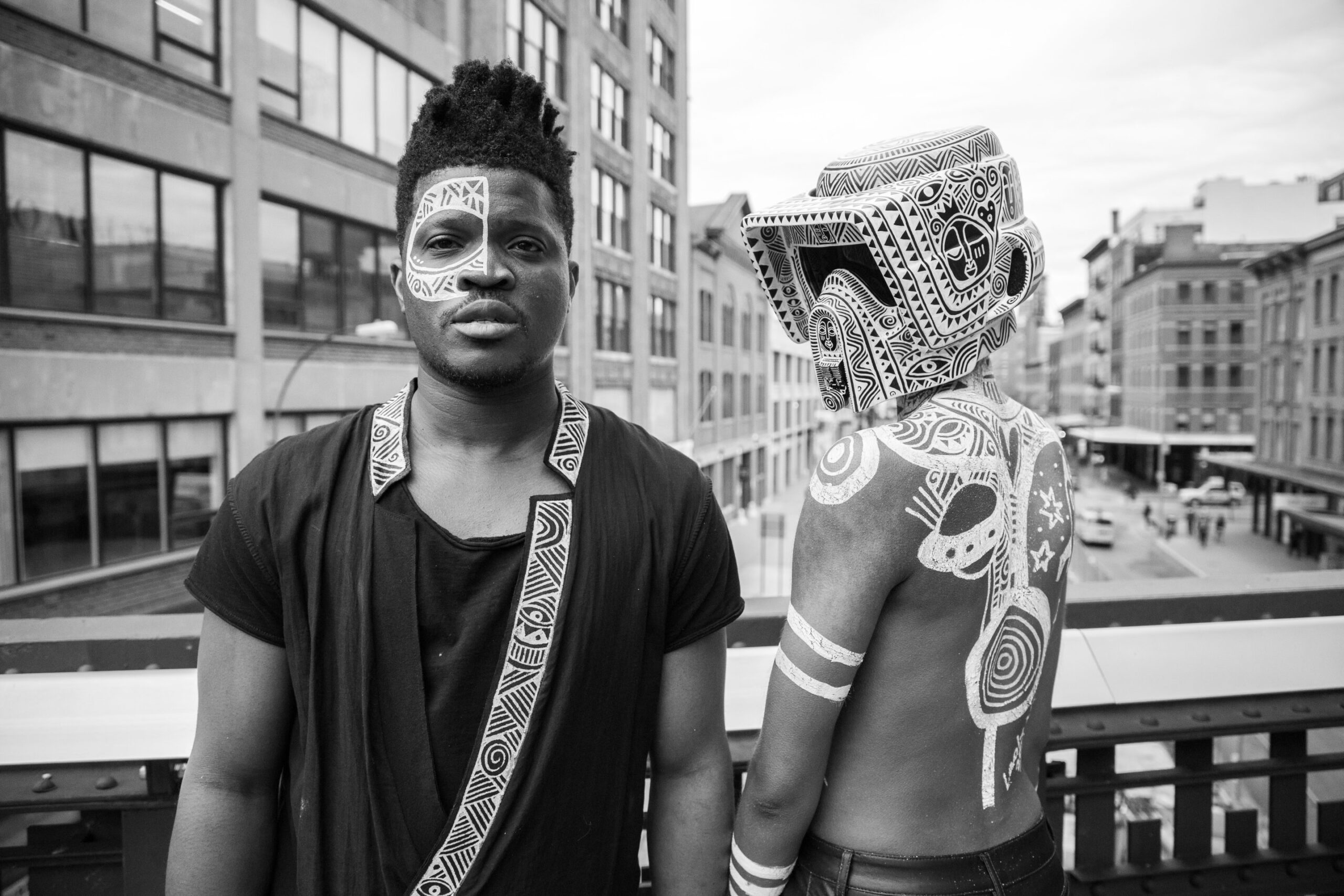
NEW YORK CITY weather is notoriously unpredictable. One moment, it’s a biting cold with residents huddling under layers of clothing; the next, a swelter-ing heat forces them to retreat into air-conditioned havens. For Laolu Senbanjo, the city’s erratic climate has a peculiar irony. Here’s a Nigerian man, used to the scorching unforgiving sun of his homeland, lamenting on the New York heat. But after spending years away from Nigeria, this paradoxical gripe was a testament to how deeply he had integrated into his new environment.
Laolu Senbanjo, popularly known as Laolu NYC, is an artist whose work is unmistakable, character-ized by its striking and intricate attention to detail. His art transcends traditional canvases, finding expression on everything from sneakers to bottles, walls, and even bodies. “Everything is my canvas,” he proclaims, a mantra perfectly encapsulating his artistic philosophy. His work, a fusion of ancient African traditions with modern pop culture, tells stories of his Yoruba heritage, spirituality, and the human experience.
Laolu’s artistic prowess has not gone unnoticed in the global pop culture arena. His journey includes collaborations with global giants like Nike, design-ing the Nike Air Max 1 Master, and infusing Yoruba artistry into campaigns for brands such as Bulgari and Starbucks. His iconic work with Beyoncé on the visual album Lemonade, where his designs adorned the singer’s and dancers’ bodies, further solidified his reputation as an artist who brings authenticity and cultural depth to his work.
Laolu’s artistic journey began in Ilorin, Nigeria, where he grew up surrounded by an array of pat-terns, colors, and textures that fueled his creativity. Reflecting on his childhood, he shares, “One of my earliest memories was drawing patterns on bed-sheet fabric for my mom.” The vibrant hues and intricate designs of the Iro and Buba garments his mother wore left a lasting impression. “I was always drawn to fabric,” he says, “and I saw patterns in everything.”
Growing up, Laolu’s unique perspective led him to find inspiration in the most unexpected places. He would sit and stare at the marble floors, seeing faces and stories within the patterns. “I just thought every-body could see stories in everything,” he says. This early ability to see art in the mundane set him apart, even if he didn’t fully understand it at the time.
His passion for visual storytelling extended to comic books, which he would collect and meticu-lously study. “I was a huge comic geek as a child,” Laolu admits with a laugh. “I loved Marvel and DC comics. Anything with drawings, really.” This early exposure to the art of comic books laid a solid foun-dation for his future work. His fascination with superheroes and their stories of overcoming adversity mirrored his own journey and fueled his creativity.
Despite his early love for art, Laolu faced significant resistance from his family. “They really kicked against arts from the jump,” he says. “My dad was like, ‘No,’ my mom was like, ‘No,’ everyone was like, ‘No.’ They wanted me to be a lawyer.” And so, he became one, working as an attorney at the National Human Rights Commission in Abuja. Yet, his passion for art never waned. Even as he practiced law, he found ways to integrate art into his life, using it as an outlet for self-expression and a tool for social change.
It wasn’t until after law school that Laolu experienced a pivotal shift. “Around 2007 or 2008, I started having these epiphanies,” he explains. The passing of his grandmother, a significant influence in his life, spurred a deeper connection to his Yoruba heritage. “She taught me about Yoruba spirituality and proverbs. She was very much into Yoruba culture, and she would sing my Oriki—a chant of praise and identity.”
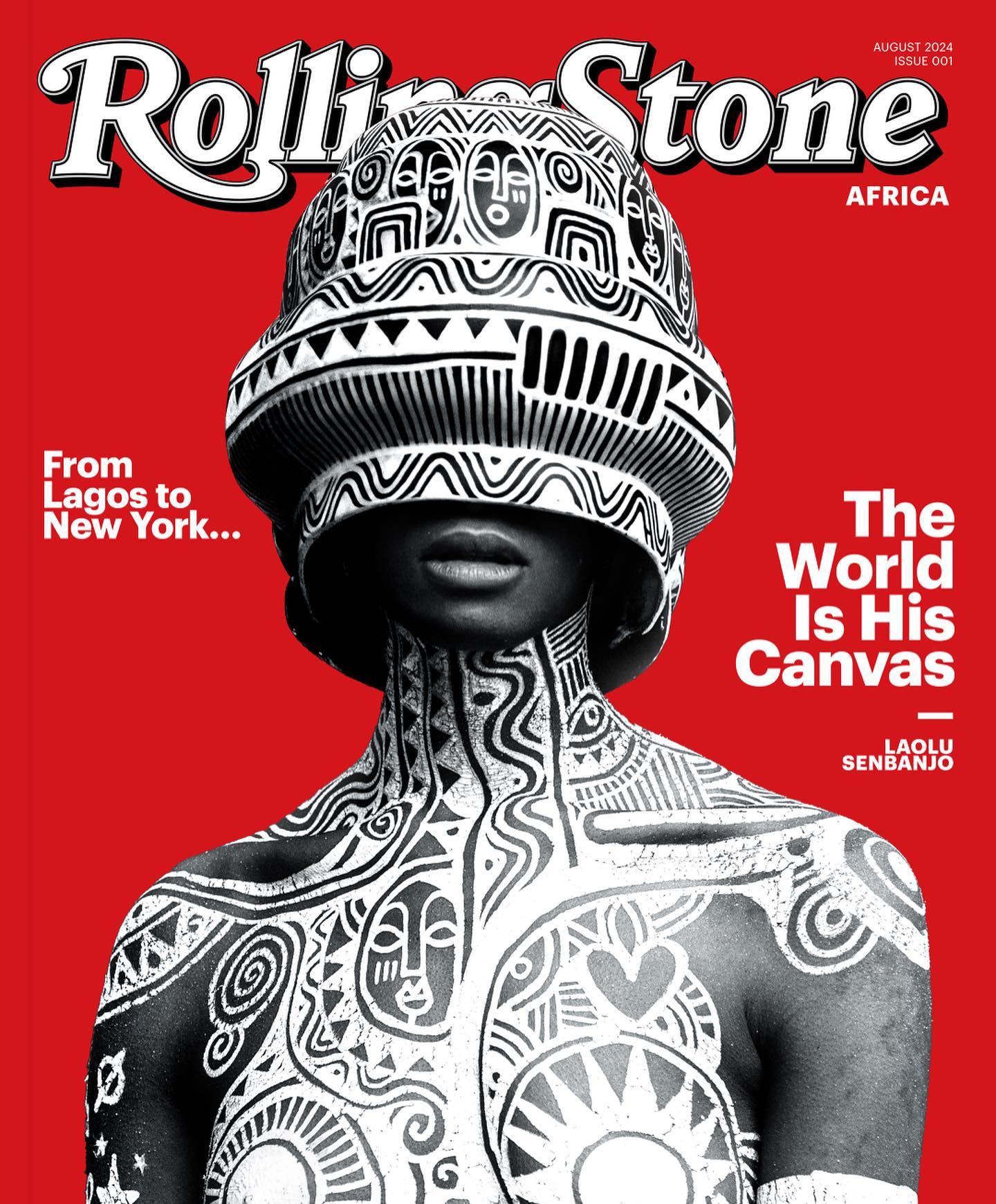
His grandmother’s teachings left an indelible mark on him. “My grandmother was a repository of Yoruba wisdom,” Laolu recalls fondly. “She would sit with us and share stories, proverbs, and the signifi-cance of our cultural practices. At the time, I didn’t fully appreciate it, but those moments were the foundation of my understanding of our heritage.”
This cultural awakening led Laolu to embrace his heritage in his art. “For a long time, I dismissed traditional Yoruba art as ‘too ethnic.’ But eventually, I realized the power and beauty in my own culture.” This realization marked a turning point in his career, as he began to incorporate traditional Yoruba elements into his work, creating a unique and powerful visual language. His art began to reflect the complexity of his identity, merging the old with the new and resonating with a global audience.
In 2011, Laolu left Nigeria for South Africa, where he spent nearly a year showcasing his art. This experience exposed him to a broader audience and solidified his belief that he could make a living as an artist. However, it was his move to New York that truly transformed his life. “I’ve never felt more alive,” he says of his time in New York. For the first time, he could introduce himself as an artist, and people accepted that without question, which was not the case back home. “New York is a place where you can reinvent yourself,” he says. “I was just another face in the crowd, but I felt seen in a way I hadn’t before.”
His journey in New York was not without challenges. “The English was different, the social cues were different,” he says. “Even buying food was a challenge. But the wonder of New York superseded the pain.” The city’s dynamic energy and diverse cultural landscape offered him the perfect backdrop to explore and express his creativity.
The vibrant energy of New York City became a canvas in itself for Laolu. “New York is a place where you can reinvent yourself,” he says. “I was just another face in the crowd, but I felt seen in a way I hadn’t before.” The city’s diversity and dynamic arts scene provided a fertile ground for his creativity to flourish.
Deeply rooted in Yoruba culture, his work is dedicated to sharing this heritage with the world. “I want to show that Nigerian culture, African culture, is just as valid and important as any other,” he asserts. His collaborations with major brands like Nike, Bulgari, and Starbucks have brought Yoruba art to new and unexpected places. “Every collaboration is an opportunity to tell a story,” Laolu explains. “I want people to see the richness of African culture, to see its beauty and depth.”
One of Laolu’s most impactful collaborations was with Beyoncé. “Working with Bey was a huge moment,” Laolu recalls. Selected for his unique “Sacred Art of the Ori,” Beyoncé appreciated Yoruba art’s authenticity and cultural significance. His intri-cate body paintings, prominently featured in Lemonade, showcased Yoruba symbols and mythology, creating a powerful visual narrative about identity and heritage. This project not only highlighted Laolu’s artistry but also ignited global discussions about African art and culture, establishing his influence in contemporary art.
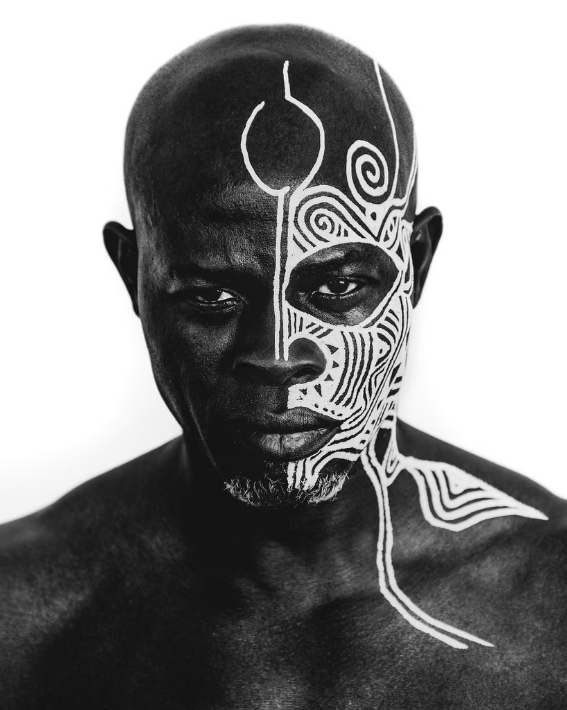
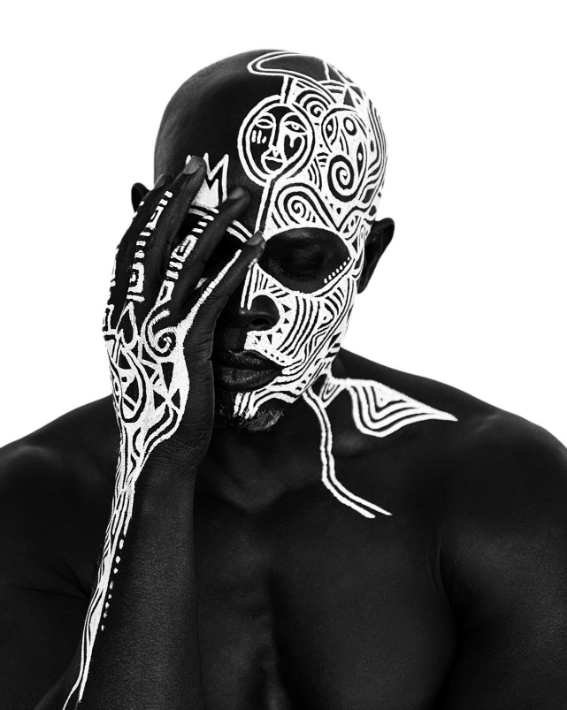
In addition to Beyoncé, Laolu has worked with artists and brands like Alicia Keys, who featured his designs in her music video “In Common,” and global giants like Equinox and Belvedere Vodka, where he infused his unique style into their products and marketing campaigns. His artwork has graced the runways of New York Fashion Week and been featured in prestigious exhibitions worldwide, including the Brooklyn Museum and the Smithsonian Institution.
Laolu is committed to inspiring the next generation of African artists. “It’s very important for kids to see a reflection of themselves in art,” he says. “I never saw any African superheroes growing up. We need to change that.” He regularly gives talks and workshops, sharing his journey and encouraging young artists to embrace their heritage. His work with schools and community organizations aims to instill a sense of pride and possibility in young Africans. “Art can be a powerful tool for empowerment,” Laolu believes. “When children see them-selves reflected in art, it validates their experiences and tells them that their stories matter.”
Despite his success, Laolu remains humble and focused on his mission. “The world is your canvas,” he tells Africans everywhere. “Don’t limit yourself. Your ideas are valid, and you deserve to be in these spaces.” He dreams of even bolder projects, like painting a spaceship. “I want to see Yoruba art in space,” he says with a laugh. “Imagine an Adire-look-ing spaceship. That would be amazing.”
His ambitions know no bounds: he envisions Yoruba patterns gracing the surfaces of spaceships and collaborating with visionary designers. “Imagine aliens seeing Yoruba art and understanding a piece of our culture. That’s the power of art—it transcends earthly boundaries.”
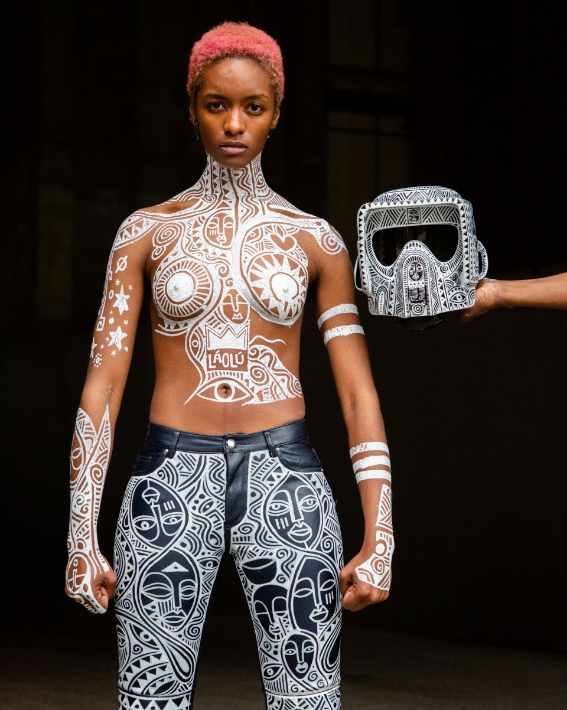
Laolu’s creative journey doesn’t stop at visual art. He is also a passionate musician, seamlessly blend-ing his artistic sensibilities into his music. “I love sounds, I love making music, I love writing songs,” he says. Like his art, his music reflects his Yoruba heritage and life experiences. His upcoming album is a testament to his multifaceted talent, featuring collaborations with renowned artists such as Seun Kuti and Yemi Alade. One of his defining moments was opening for the legendary Tony Allen in New York. Laolu recalls, “I started going to venues in New York, watching Afrobeat bands perform. It was surreal to see these bands, even white boys, playing Fela’s music with such precision. It inspired me to make my own music.” This experience fueled him to design an album cover and performing with Tony Allen—a pivotal moment in his musical journey.
Reflecting on his journey, Laolu emphasizes the importance of cultural authenticity: “There’s a lot of codes and writing in what I do, and I want people to study it. I want it to end up in libraries and text-books. This is a movement. If I know Picasso’s life story, why shouldn’t you know mine?”.
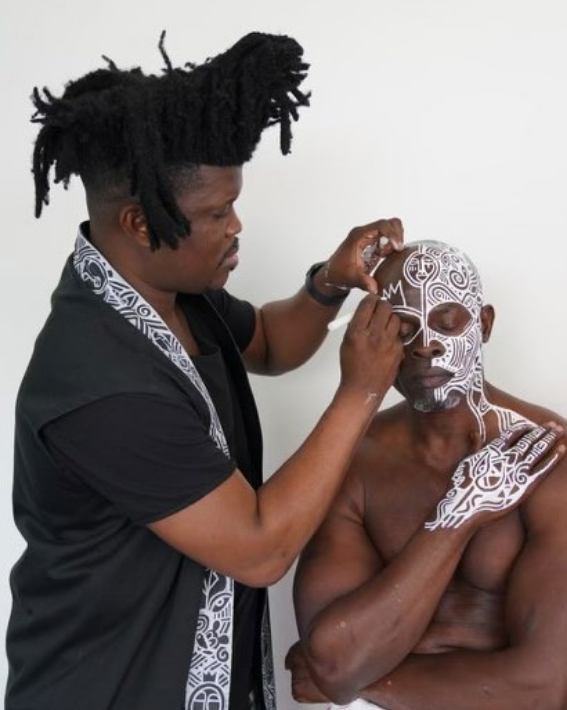
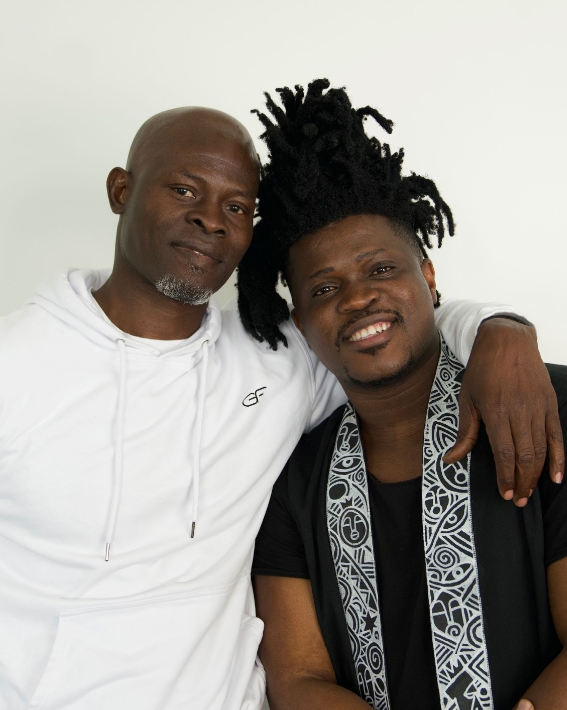

© Copyright Rolling Stone Africa 2024. Rolling Stone Africa is published by Mwankom Group Ltd under license from Rolling Stone, LLC, a subsidiary of Penske Media Corporation.
By providing your information, you agree to our Terms of Use and our Privacy Policy. We use vendors that may also process your information to help provide our services.
By registering for our sites and services, you agree to our Terms of Service (including, as applicable, the mandatory arbitration and class action waiver provisions) and our Privacy Policy.
We use vendors that may also process your information to help provide our services.
This site is protected by reCAPTCHA and the Google Privacy Policy and Terms of Service apply.
By providing your information, you agree to our Terms of Use and our Privacy Policy. We use vendors that may also process your information to help provide our services.